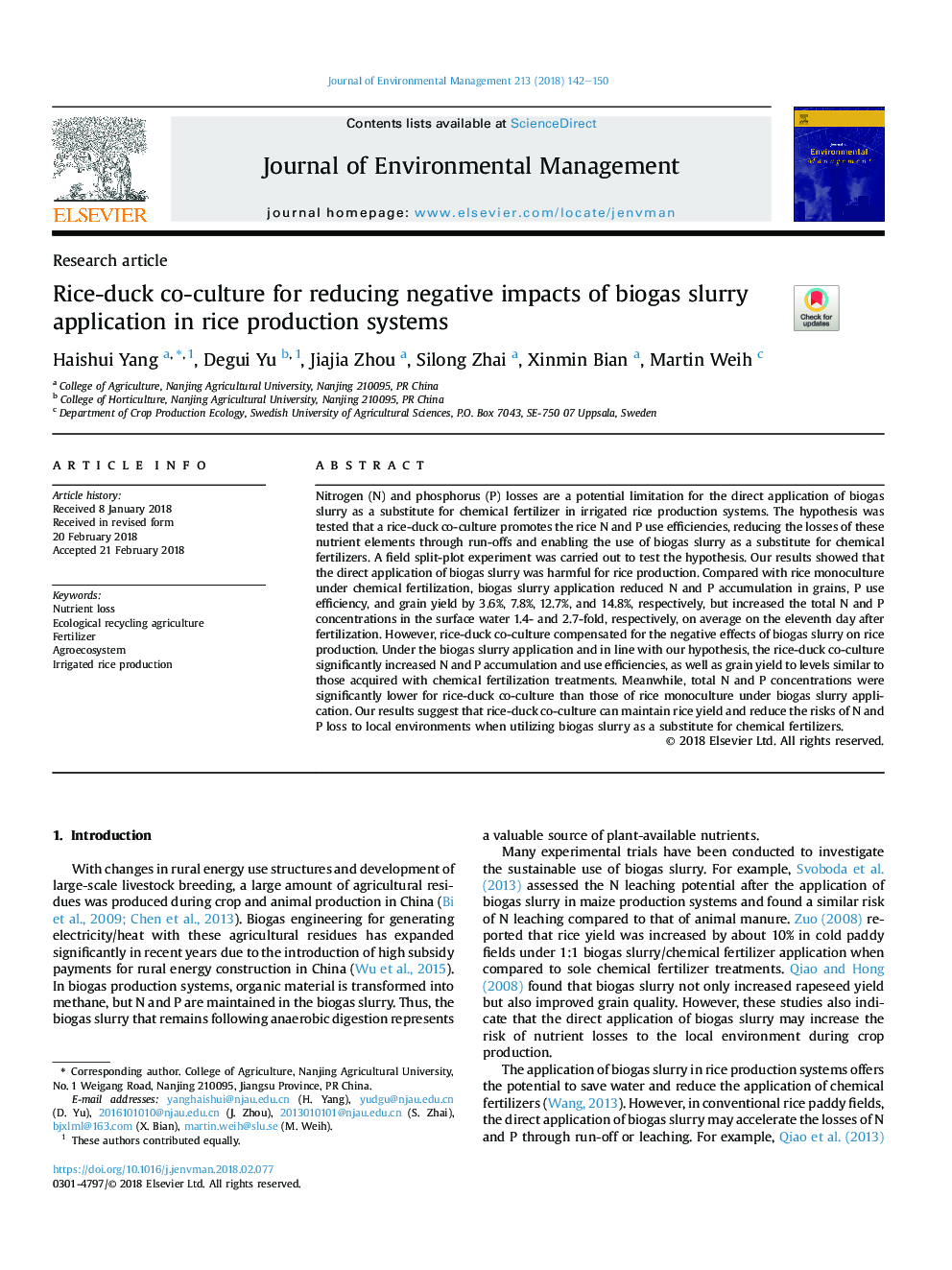| Article ID | Journal | Published Year | Pages | File Type |
|---|---|---|---|---|
| 7477709 | Journal of Environmental Management | 2018 | 9 Pages |
Abstract
Nitrogen (N) and phosphorus (P) losses are a potential limitation for the direct application of biogas slurry as a substitute for chemical fertilizer in irrigated rice production systems. The hypothesis was tested that a rice-duck co-culture promotes the rice N and P use efficiencies, reducing the losses of these nutrient elements through run-offs and enabling the use of biogas slurry as a substitute for chemical fertilizers. A field split-plot experiment was carried out to test the hypothesis. Our results showed that the direct application of biogas slurry was harmful for rice production. Compared with rice monoculture under chemical fertilization, biogas slurry application reduced N and P accumulation in grains, P use efficiency, and grain yield by 3.6%, 7.8%, 12.7%, and 14.8%, respectively, but increased the total N and P concentrations in the surface water 1.4- and 2.7-fold, respectively, on average on the eleventh day after fertilization. However, rice-duck co-culture compensated for the negative effects of biogas slurry on rice production. Under the biogas slurry application and in line with our hypothesis, the rice-duck co-culture significantly increased N and P accumulation and use efficiencies, as well as grain yield to levels similar to those acquired with chemical fertilization treatments. Meanwhile, total N and P concentrations were significantly lower for rice-duck co-culture than those of rice monoculture under biogas slurry application. Our results suggest that rice-duck co-culture can maintain rice yield and reduce the risks of N and P loss to local environments when utilizing biogas slurry as a substitute for chemical fertilizers.
Keywords
Related Topics
Physical Sciences and Engineering
Energy
Renewable Energy, Sustainability and the Environment
Authors
Haishui Yang, Degui Yu, Jiajia Zhou, Silong Zhai, Xinmin Bian, Martin Weih,
